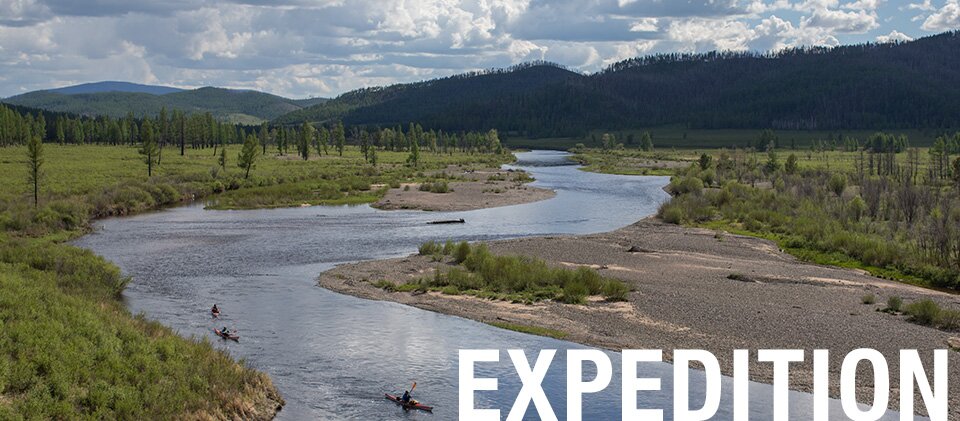Scientific Study of Rivers
When I first embarked on the journey to explore the vast and untamed expanses of Russia's Far East, particularly the Amur River, I was filled with a mix of apprehension and curiosity. Natalia's question, posed amid the desolate backdrop of Komsomolsk Na Amure, echoed the doubts that had haunted my mind since planning this adventure. "Why visit a place seemingly abandoned by God?" she asked. This sentiment, voiced so clearly by someone who lived in the harsh reality of this remote region, struck a chord with me. Yet, despite the daunting challenges and the stark environment, I found myself drawn to the unique allure of the Amur River. Its wildness, its isolation, and the sheer scale of its flow promised an encounter with nature in its most unbridled form.
The scientific study of rivers, or "river science," as it's often called, was not just an academic pursuit for me but a deeply personal journey into understanding how rivers shape landscapes, ecosystems, and human lives. Rivers are lifelines, carving paths through the earth, nurturing biodiversity, and shaping human civilizations. My experience on the Amur River, however, was about to teach me that rivers also hold stories of resilience, adaptation, and the raw power of nature.
River Science
The "river science" behind rivers like the Amur encompasses a broad range of disciplines, from hydrology and environmental science to geography and ecology. These scientific fields offer insights into the river's water quality, flow patterns, sediment transport, and ecological dynamics. Yet, as I navigated the Amur's vast waters, the "scientific study of rivers" became more than just an academic interest. It was a lived experience, where each paddle stroke through the water was a lesson in the river's moods, its challenges, and its surprises.
The concept of "nobody’s river" became a recurring theme in our journey. This idea reflects the notion that rivers, despite being geographically anchored, belong to no one and everyone at the same time. They are natural resources that cut across borders, communities, and cultures, yet they remain distinctly wild and untamed. The Amur, with its sprawling reach and untamed flow, epitomized this concept. It was a reminder that in the face of nature's majesty, human presence is fleeting and often inconsequential.
As we delved deeper into our expedition, the "nobody’s river film" aspect of our journey took on a new meaning. This wasn't just about documenting a physical journey down a river; it was about capturing the essence of exploration, the confrontation with the unknown, and the transformative power of nature. Through our struggles, fears, and moments of awe, we were compiling a narrative that transcended our individual experiences, highlighting the universal connection between humans and the natural world.
The Scientific Study of Rivers
Reflecting on our journey, the scientific study of rivers takes on a multifaceted meaning. It's not only about the physical and ecological aspects but also about understanding the human relationship with these natural corridors. The Amur River, with its daunting scale and wild beauty, taught us about resilience, the importance of preparedness, and respect for the natural world. These lessons, while learned in the context of a specific geographical and cultural setting, have universal applicability, especially in an era where environmental awareness and conservation are paramount.
Our experiences on the Amur also highlighted the importance of education in fostering a deeper connection with the natural world. Natalia's perspective, shaped by her environment and experiences, and our own preconceptions, were transformed through direct engagement with the river. This transformation underscores the role of experiential learning in environmental education. By stepping out of the classroom and into the world, we gain insights and understandings that are not possible through textbooks alone.
In conclusion, the scientific study of rivers is a journey of discovery, not just of the rivers themselves but of our place within the natural world. The Amur River, with its challenges, beauty, and untamed wildness, served as a powerful teacher. It taught us about the fragility of human existence in the face of nature's might, the importance of resilience, and the profound connections that can be formed when we confront and embrace the unknown. As we continue to explore and study the world's rivers, let us do so with a sense of humility, curiosity, and a deep respect for the natural forces that shape our planet.
Author Bio
Nicole Hardy is a renowned education and arts journalist, widely recognized for her insightful and comprehensive coverage of performing arts education. With a career spanning over a decade, Hardy has established herself as a leading voice in the field, known for her in-depth analyses and engaging writing style. She holds a Master's degree in Journalism from the University of Arts, where she specialized in arts and culture reporting.





